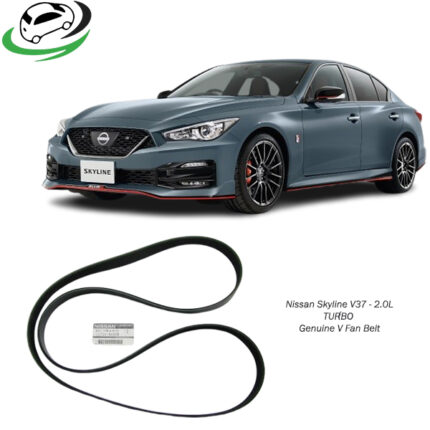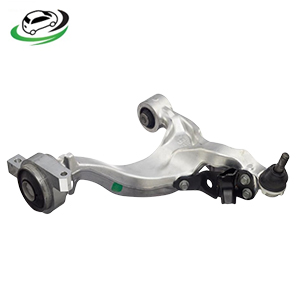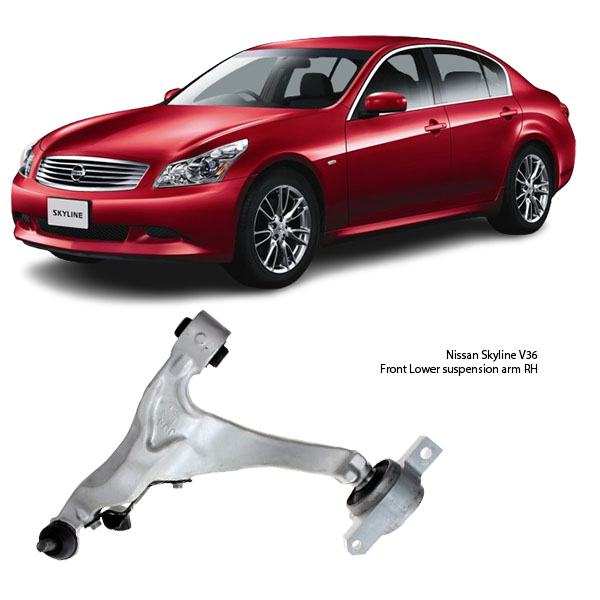-11%
Get Nissan Skyline V36 Front Lower Suspension Arm RH 54500-JU41B in Kenya
The Front Lower Suspension Arm RH (Right-Hand side) is a key component in a vehicle’s front suspension system, responsible for connecting the chassis to the front right wheel hub assembly. Its design and construction are crucial for ensuring vehicle stability, control, and comfort.
Function
The primary function of the Front Lower Suspension Arm RH is to:
-
Maintain proper alignment of the front right wheel.
-
Allow vertical motion of the wheel during driving.
-
Transfer road loads to the vehicle’s frame.
-
Support steering movements while ensuring the tire maintains constant contact with the road surface.
The arm enables controlled up-and-down motion of the suspension while minimizing lateral movement, contributing to precise handling and improved ride quality.
Design & Construction
The suspension arm is engineered for strength, durability, and flexibility. It typically consists of the following:
-
Arm Body: Often A-shaped or L-shaped, made from forged steel, stamped steel, aluminum, or cast iron.
-
Bushings: Rubber or polyurethane mounts at the chassis connection points to allow controlled movement and absorb vibration.
-
Ball Joint: Connects the arm to the steering knuckle or spindle, allowing for pivot and rotational motion necessary for steering and suspension articulation.
-
Mounting Points: Precisely machined holes or brackets for secure attachment to the subframe and steering knuckle.
Materials
-
Forged Steel: High strength, durable, common in OEM and performance applications.
-
Stamped Steel: Lightweight and cost-effective, widely used in passenger vehicles.
-
Cast Iron: Very durable, used in heavier vehicles or for high-load applications.
-
Aluminum Alloy: Corrosion-resistant and lightweight, common in modern cars and SUVs for fuel efficiency and ride comfort.
Load Handling
The Front Lower Suspension Arm RH handles:
-
Vertical loads from road irregularities.
-
Lateral forces during turning or cornering.
-
Braking and acceleration loads transmitted from the wheel assembly to the chassis.
It plays a vital role in maintaining the suspension geometry—especially camber, caster, and toe—essential for tire alignment and stability.
Installation Position
-
Located at the front right-hand side (passenger side in left-hand-drive vehicles).
-
Bolted to the subframe at two points via bushings.
-
Connected to the steering knuckle through a ball joint at the outer end.
Compatibility
Different vehicle makes and models have uniquely shaped arms with specific mounting geometries. Variations may exist in:
-
Length and shape
-
Mounting hole diameter and spacing
-
Bushing size and material
-
Ball joint design (integrated or separate)
Some designs feature two lower arms per side (in double wishbone systems), while others have a single lower arm (MacPherson strut systems).
Signs of Wear
The Front Lower Suspension Arm RH can wear out or get damaged due to:
-
Constant exposure to road impacts, water, dust, and debris.
-
Degradation of bushings over time due to heat and friction.
-
Ball joint wear or corrosion.
Symptoms of a failing arm include:
-
Unusual tire wear on the front right.
-
Steering instability or vibration.
-
Clunking noises from the front suspension.
-
Poor alignment or drifting during driving.
Inspection and Replacement
Visual inspection may reveal:
-
Torn or cracked bushings.
-
Excessive play in the ball joint.
-
Rust, bending, or cracks in the arm structure.
It is generally recommended to replace the entire arm unit if any component (bushing or ball joint) is excessively worn or damaged, especially in integrated designs where components are not serviceable separately.
OEM vs Aftermarket
Front Lower Suspension Arms RH are available in:
-
OEM (Original Equipment Manufacturer) parts, ensuring factory specifications and compatibility.
-
Aftermarket options, offering a range of qualities—from budget-friendly to performance-grade alternatives.
OEM parts are often preferred for their precise fit and durability, while premium aftermarket brands may offer enhanced materials or reinforced designs.
Typical Applications
The arm is found across all types of vehicles:
-
Passenger cars: For daily driving comfort and control.
-
SUVs and 4x4s: For handling heavier loads and rough terrain.
-
Trucks and vans: Built to withstand higher stress and payloads.
-
Performance vehicles: Engineered for precise geometry and high-speed stability.
Each variant is designed according to the vehicle’s suspension architecture.
Ball Joint Variants
Some suspension arms come with:
-
Pressed-in ball joints: Not removable, entire arm must be replaced when joint wears.
-
Bolt-on ball joints: Can be replaced independently.
-
Serviceable joints: Designed for long-term maintenance in commercial or performance applications.
Bushings Types
Bushings in the arm may be:
-
Rubber: Standard for comfort and noise reduction.
-
Polyurethane: For performance and longevity.
-
Hydraulic-filled: For high-end vehicles requiring improved vibration damping.
The type of bushing significantly affects ride feel and noise levels.
Corrosion Protection
High-quality arms feature:
-
Powder coating or zinc plating to resist rust and corrosion.
-
Greaseable ball joints in some aftermarket designs for extended service life.
Proper surface treatment ensures durability, especially in regions with high humidity, salt exposure, or rough terrain.
Precision Manufacturing
Key specifications maintained during manufacturing include:
-
Mounting hole alignment tolerances.
-
Bushing and ball joint press fit tolerances.
-
Arm length and curvature to match OEM suspension geometry.
These ensure compatibility and proper function when installed.
The Front Lower Suspension Arm RH is more than just a metal link—it’s an engineered suspension element that absorbs, pivots, and aligns under complex forces while keeping the vehicle safe, comfortable, and responsive. Selecting a high-quality arm and ensuring correct installation are essential for maintaining your vehicle’s suspension performance and safety.
Follow us on Facebook for more parts.



